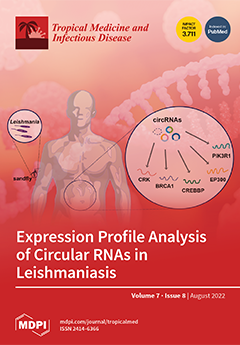Tuberculosis (TB) is one of the oldest human diseases, and preventing treatment failure is critical. This is because TB cases pose a risk to the immediate and remote communities due to the potential for spread, particularly for multidrug-resistant (MDR) strains that have been associated with higher morbidity and mortality rates. Hence, this study looked at the factors that influence TB treatment outcomes in Southwest Nigeria. We conducted a cross-sectional study with 712 TB patients from 25 directly observed treatment short course (DOTS) centers, out of which 566 (79.49%) were new treatment cases, and 102 (14.33%) were retreatment cases. The outcome variable was computed into successful treatment where ‘Yes’ was assigned to TB treatment completed and cured, and ‘No’ was assigned to all the remaining outcomes following the standard TB definition. Independent variables included in the analysis were the patient’s socio-demographic characteristics (such as age, sex, distance from the facility, marital status, family type, education, and computed socioeconomic status from modified DHS household assets), clinical and facility parameters (such as the HIV status, facility of access to healthcare, healthcare workers attitudes, services offered at the facility, appearance of the facility, number of people seeking care and waiting time at the facility). Bivariate analysis showed that HIV status (OR: 3.53, 95% CI: 1.83–6.82;
p = 0.001), healthcare worker attitude (OR: 2.13, 95% CI: 1.21–3.74;
p = 0.01), services offered at the facility (OR: 0.67, 95% CI: 0.49–0.92;
p = 0.01), appearance of facility (OR: 0.67, 95% CI: 0.46–0.98;
p = 0.04), and number of people seeking care (OR: 2.47, 95% CI: 1.72–3.55;
p = 0.001) were associated with higher odds of successful treatment outcome with statistical significance. After multivariate analysis, reactive HIV status (aOR: 3.37, 95% CI: 1.67–6.80;
p = 0.001), positive attitude of healthcare workers (aOR: 2.58, 95% CI: 1.36–4.89;
p = 0.04), excellent services offered at the healthcare facility (aOR: 0.53, 95% CI: 0.36–0.78;
p = 0.001) and few people seeking care (aOR: 2.10, 95% CI: 1.21–3.84;
p = 0.001) became independent significant determinants of successful treatment outcome. The study concluded that reactive HIV status, positive attitude of healthcare workers, few people seeking healthcare, and excellent service provided were all factors that contributed to successful treatment outcomes.
Full article






